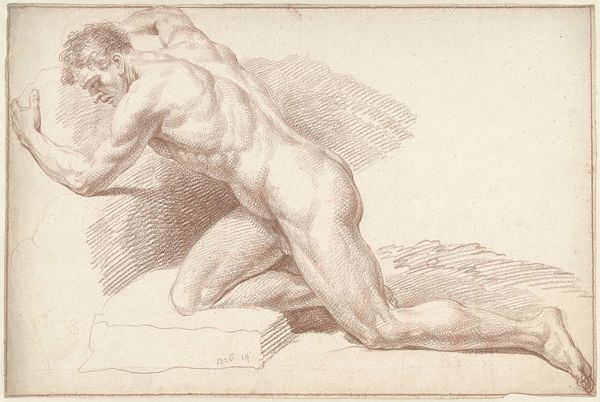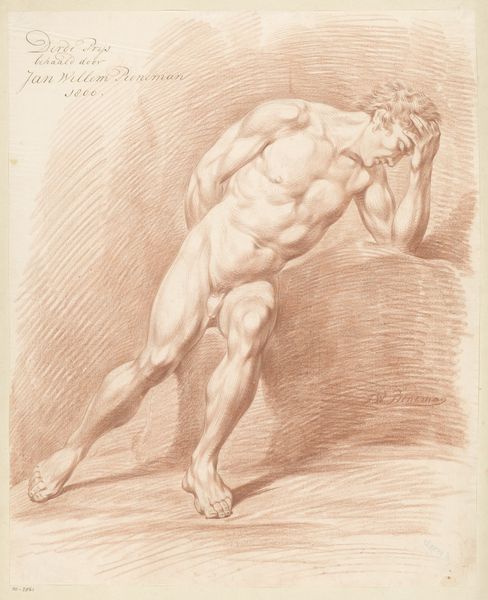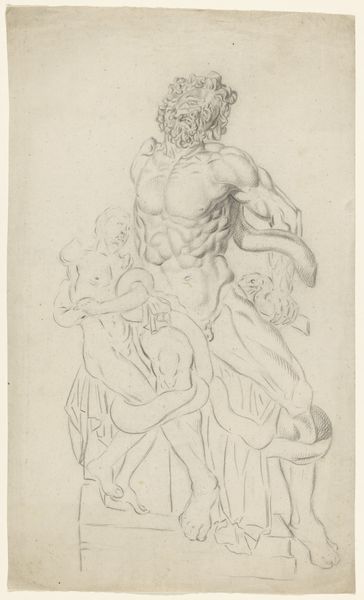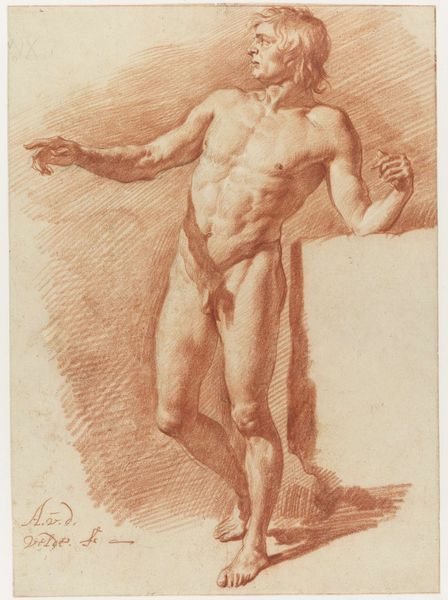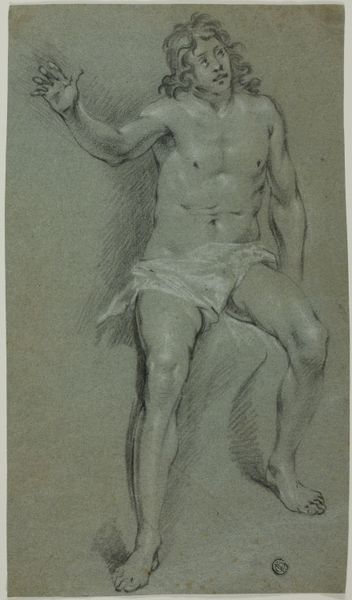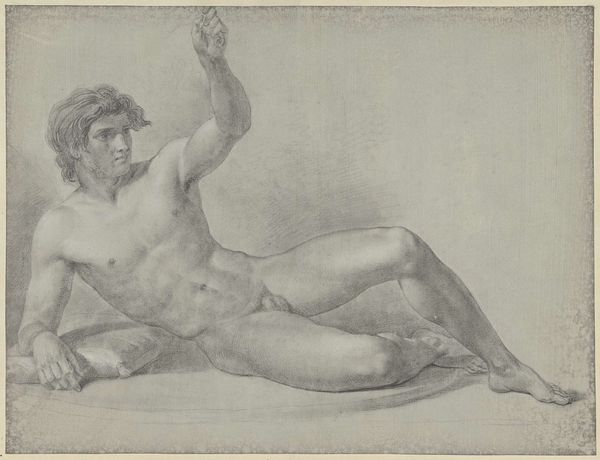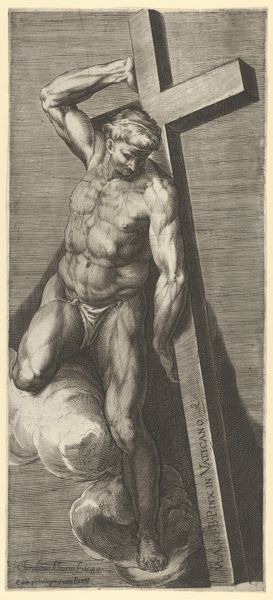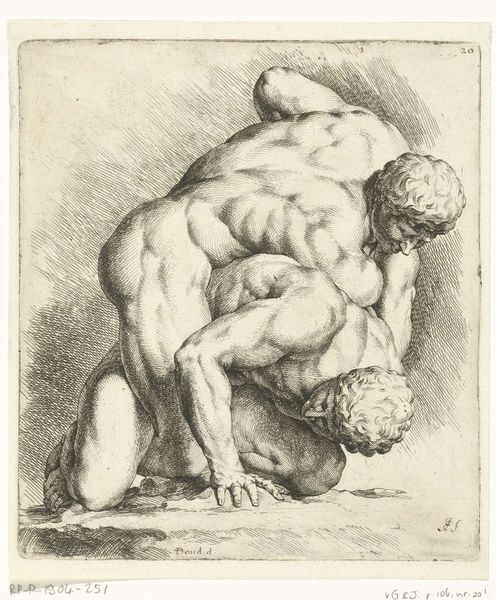
drawing, engraving
#
portrait
#
drawing
#
neoclacissism
#
pencil sketch
#
greek-and-roman-art
#
figuration
#
form
#
line
#
portrait drawing
#
history-painting
#
engraving
#
realism
Dimensions: height 202 mm, width 280 mm
Copyright: Rijks Museum: Open Domain
Damiano Pernati made this etching of Hercules sometime around the turn of the 19th century. This was a time when academies across Europe were codifying artistic principles and practices. Hercules, or Heracles as he was known in ancient Greece, was an exemplar of masculine virtue. His visual representation in art served as a model for ideal form. The heroic male nude was thought to exemplify the power of classical antiquity as a cultural ideal. Pernati’s print probably reproduces a drawing of an ancient sculpture. The institutions of art education in Europe at this time valued the ability to copy the works of the past and to grasp the underlying geometries. To understand the importance of Hercules in the 18th and 19th centuries, we can consult academic publications, pedagogical treatises, and museum catalogues. Attending to the social and institutional context helps us understand the values associated with the art of the past.
Comments
No comments
Be the first to comment and join the conversation on the ultimate creative platform.

